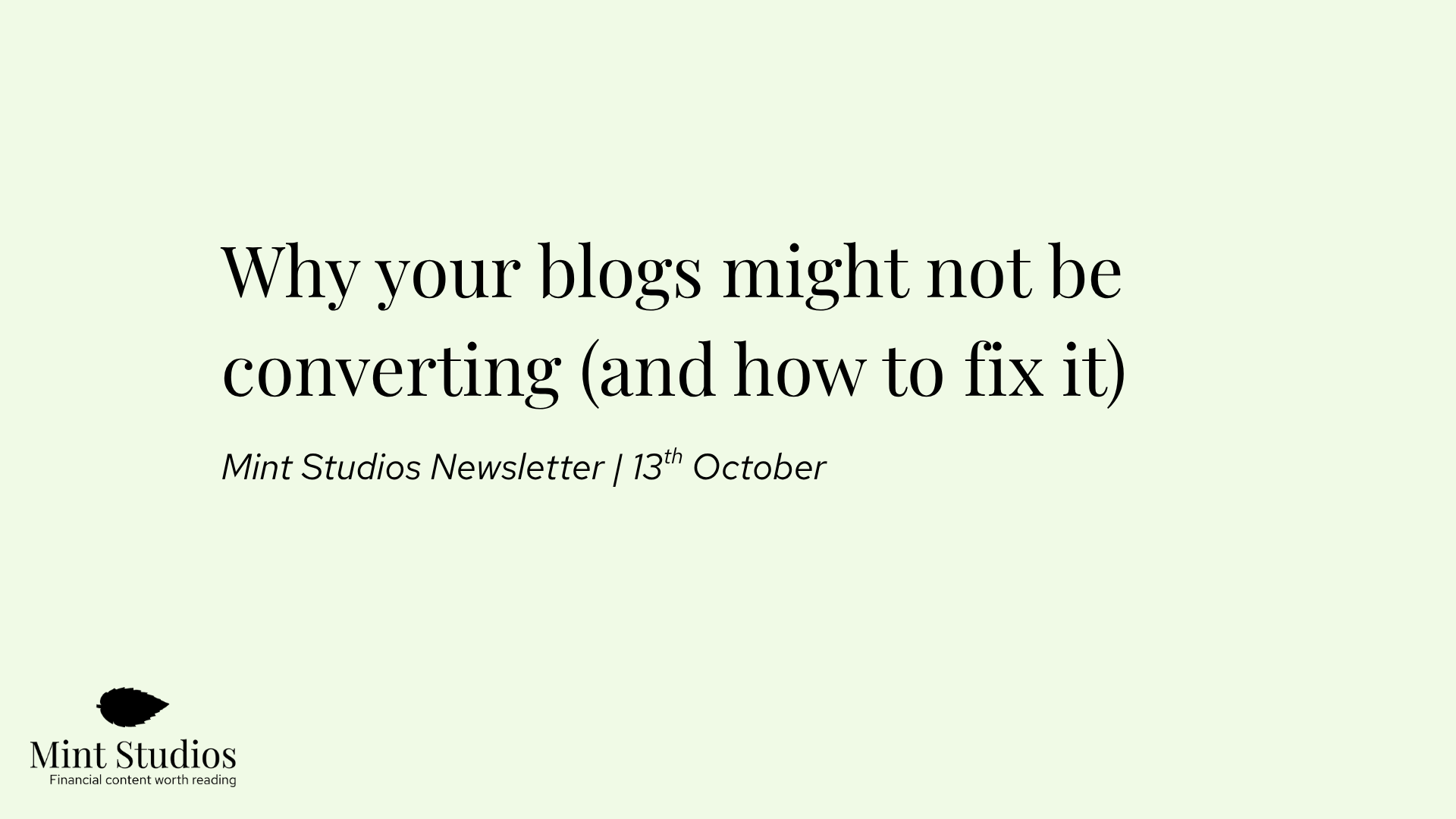The main goal of content marketing, eventually, is to increase revenue.
Although approaches will differ, that is the end goal.
But how do you measure the ROI of content marketing? How do you make sure that your efforts and investments are worth it? Content marketing is notoriously difficult to measure because things such as brand awareness, community and reputation are hard to measure.
However, there is one thing we can measure: conversions.
In this case study, I want to outline how I helped a fintech company increase their blog traffic by 208%, and total leads from the blog by 7x.

The fintech company: Pomelo Pay
Pomelo Pay is a payment service provider that helps companies accept payments via multiple payment methods. One of its most popular features is QR code payments; with QR code payments, merchants can forget about needing POS devices and just need a smartphone to take a payment.
Pomelo Pay also enables online card payments through payment links and an online shop, and merchants will soon be able to accept contactless payments as well. Whether you’re a small or large business, just needing a smartphone makes taking payments a lot easier (think taxis, hotels, etc).
I had been writing articles for Pomelo Pay for close to a year, when we started focusing on the content strategy and marketing as well. At first we had focused on increasing organic traffic, and in January 2021 the focus changed and we focused on increasing conversions.
My objective with this case study is to outline the process we followed to increase conversions, the results and additional tips for others.
Increasing conversions
1. What’s a conversion?
The first step of the process is to understand what a conversion actually means. That’s because the answer often means there are several types of conversions. Although the website was restructured and adjusted various times, we ended up with two main types of conversions:
- Lead: conversion from someone reading a blog post, and clicking on a product page, contact page or the “get-started” page.
- Prospect: conversion of someone filling out the /get-started page and sending a message to sales.
We began by focusing mostly on the first type of conversion (leads), since the /get-started page wasn’t in place at first.
Now that we know what a conversion is, it’s important to track it. Since a lead involves going from blog content to different pages, I used Google Tag Manager to group all these pages under one event and easily track them through Google Analytics and then Google Data Studio. For the second conversion, I set up an AJAX tag with Tag Manager so we could track every time someone filled out a form.
2. Which are the highest converting pages?
Now that we’re tracking, we can now see which pages are bringing in the most conversions.
Not surprisingly, it’s the blog articles that are middle or bottom of the funnel — those that are closely related to what the product is — that produce the highest conversions. Andy Crestodina calls them “mousetraps”. One rule of thumb is that if your content is closer to Top of the Funnel, then your goal is to get them to read other content — ideally a MoFu or BoFu page which can help them understand your product.

Tracking conversions allowed us to see which pieces of content were our “Mousetraps”. One easy way to get more conversions is to increase the traffic into those articles — if your article is already producing a lot of conversions, simply adding more traffic will help increase the total number of conversions (and therefore more $$).
3. Optimising
So how do you increase traffic? By optimising your content and getting it to rank on the first page and first result on Google.
When the focus is on conversions, you’ll find more traction in optimising current content rather than publishing new content (although this depends on the authority of your website and how competitive your industry is).
We set about optimising our mousetraps and other content that was doing best for us.
But first: we had to improve the reading experience and make it as comfortable as possible. This is incredibly important: many people won’t bother reading the content if it’s difficult to read or straight up uncomfortable. You’ve lost them before even giving them information or telling them about the product. Not a good way to acquire customers.
The Pomelo Pay team did a great job at that: they made the font bigger, narrowed down the paragraphs and made it easier to read. We also made paragraphs shorter and added more images.
Content-wise, how did we optimise our mousetraps? A few ways:
- Ensuring each piece of content matched the search intent of our keyword (e.g. “advantages of online ordering system” is a different intent to just “online ordering system”)
- Answering all the “People also Ask” questions in the Google search results that were relevant to the topic.

- Where information was lacking, we focused on making articles longer and more comprehensive

- Adding “Read more” and “You may like” to paragraph breaks
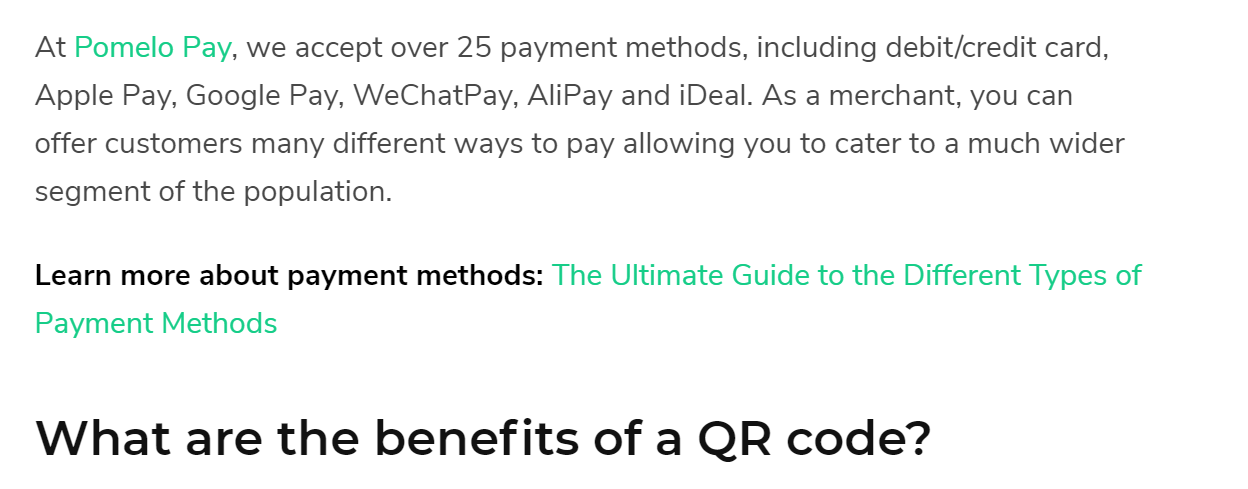
- Adding clear Call to Actions at the bottom of every article

- Mentioning Pomelo Pay more or adding more case studies and examples within the text

Just a few months later, many of the highest converting articles were on the first result of Google and bringing in hundreds of pageviews..
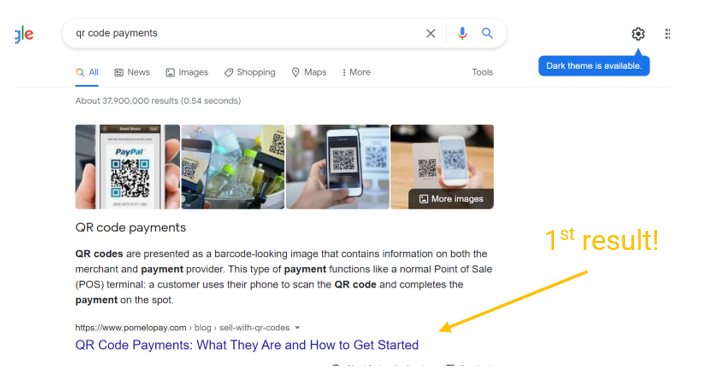
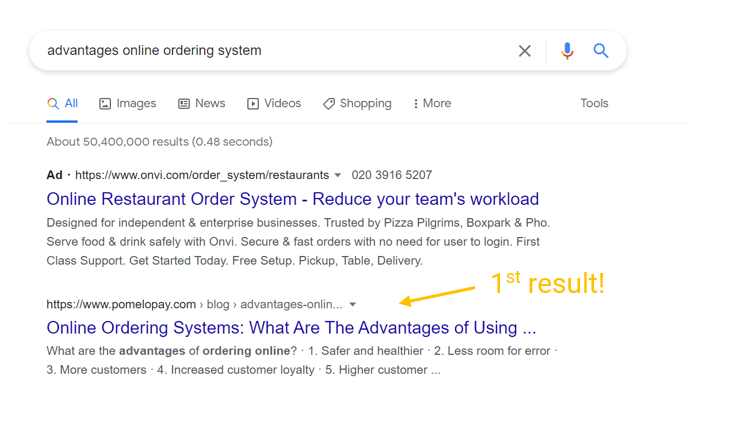
Often, your current articles are doing good work already. You just need to give them a bit of a boost.
These optimisation tactics allowed us to increase the blog traffic from January to June by 208%, and total leads from the blog more than 7x.
When we just started tracking leads, the pageviews to leads conversion rate was 0.49%. In June 2021, pageviews to leads conversion rate was 3.6%, with some articles hitting a 10% lead conversion rate.
3. Produce higher conversion articles
But we didn’t end there.
Optimising is a big part of content marketing. That’s because Google results keep adjusting, trends go through cycles and the news changes. If you want your content to stay on the first search result, you need to keep optimising.
But aside from optimising, you can also work on publishing articles that will increase conversions. This is harder, as it often does require some trial and error.
At Pomelo Pay, we did produce some Top of The Funnel content which did bring in a decent amount of traffic but not many conversions (e.g. an article about “invoice requirements”, which is related but not a product feature). But that’s the nature of ToFu.
So instead we had to produce content that is closer to the bottom of the funnel and relevant to our readers.
To find out more, I set up a call with the sales team and asked the most common questions they were getting from prospects, their unmet needs and the most important things prospects need to know before signing up to Pomelo Pay.
I also did some more customer research on my end, and focused on very specific keywords such as “payment links”, “payment methods”, “nfc mobile payments” and “payment gateway”.
Since our target market is medium to large businesses, our keywords are more generic rather than “long tail”. That’s because decision makers at these companies are unlikely to search “how to set up a payment gateway”, and instead will just look up “payment gateway”.
In order to target those keywords, we produced quite a few articles including:
- Types of payment methods
- What are NFC mobile payments and are they safe?
- Best Payment Link Provider: Where to Begin
A couple of months later, we’re already seeing some of those rank high on Google:
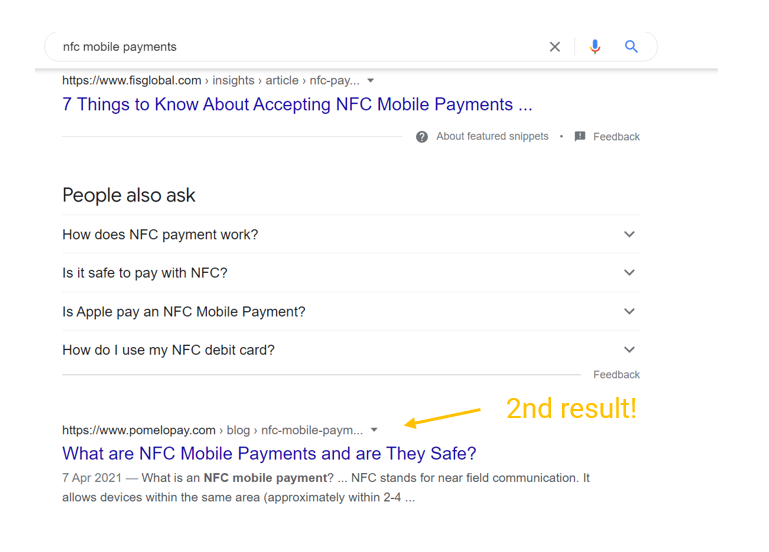
Although there will always be more content to be done, we managed to increase the number of conversions coming in through the Pomelo Pay website and set the website on the right path.
Main takeaways
For other fintech companies that do content marketing, here are a few takeaways from this case study:
Make sure the reading experience is comfortable
I read too many articles on websites where the reading experience is terrible. If you are publishing content for customer acquisition purposes, then you want to make sure your customer won’t have to squint to read your content.
Ugly pages are one of the fastest ways to get your reader to leave the page (after slow load speed).
This means:
- Narrow paragraphs
- Large fonts
- No more than 4 lines per paragraph
- Relevant images
- Clear CTAs
Here are 4 websites that I believe deliver an excellent reading experience:
- https://blog.fomo.com/
- https://neilpatel.com/blog/
- https://snov.io/blog/
- https://www.orbitmedia.com/blog/
- https://dispatch.m.io/
Make sure conversions are correctly set up with the right reports
There are several different types of conversions, so it’s important to agree on which ones to track and then keep reporting on them. Someone signing up to a newsletter is also a conversion.
So for example, you may have one article that produces a lot of conversion of people signing up to a free plan of your product — but are they paying? It’s important to see which content brings in which kind of customer.
Often, finding this information requires talking to the product or sales team and has to be input manually. Using something like Data Studio or a simple spreadsheet will make it easier to see everything on one screen.
Don’t underestimate the power of optimisation
A lot of companies think that content marketing is just publishing one blog per week and waiting for the conversions to roll in. But the real magic happens when you optimise your content.
Think of publishing an article like launching an MVP (Minimum Viable Product). You make sure to match search intent, answer all the important questions and make it easy to read. You then keep track of this article over time and see how it performs every week or every month.
If it’s not doing as well as you want it to, then you tweak it: answer more relevant questions, add in an infographic, do a guest post that links back to it. You keep working on it, and then when it’s finally performing — you keep an eye on it and be ready to optimise whenever necessary.
If you already have a lot of content on your website, you may be better off optimising what you already have rather than publishing new content (it’s cheaper, and you’ll still get the conversions!).
Oh and, focus on distribution: get your content out there: Why Fintech Companies Need to Consider Content Distribution
Big thanks to the Pomelo Pay team — it was a pleasure to work with such a fantastic product and company for a year and a half. QR code payments to the moon! 🚀
Mint Studios is a fintech content marketing agency that helps fintech companies turn their blog into a customer acquisition channel.
Learn more about how we work and get in touch with us!









